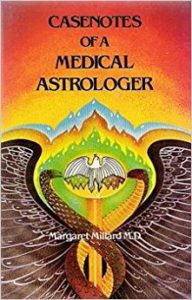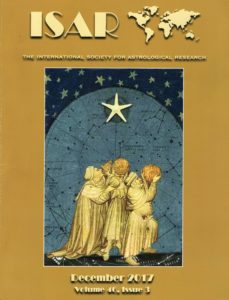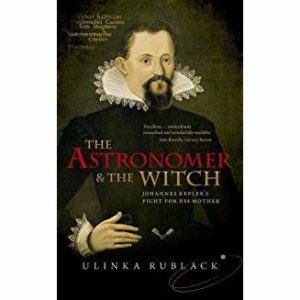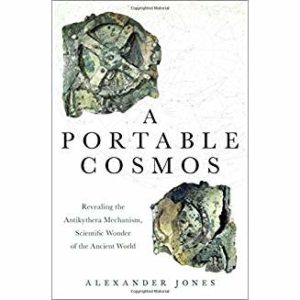Published in 1980 by Samuel Weiser, Casenotes was written by Margaret Millard, M.D., an obstetrician and general practitioner who somehow also found the time to raise six children. Uranus rising made her an independent thinker, and she was also an accomplished medical astrologer who later practiced acupuncture and holistic health. 
As a medical professional, Millard also had access to hospital records, where she often obtained the birth times of many of the patients she treated. Readers are the beneficiaries of the corresponding birth charts, along with her insights and expertise. As a local doctor in Maine, Millard often personally knew the people she writes about and sometimes their families as well. There are many difficult and sad cases that she could not resolve and she shares the heartbreak of doing your best while dealing with the inevitable.
I’ve had an interest in medical astrology for years, but it’s a complex topic. This is not a cookbook or textbook, but if you already know the language of astrology, you’ll follow the discussion. I was also initially drawn toward Millard’s consistent use of declination in her interpretations, and with declinations we see chart themes both echoed and highlighted. The book is aptly titled “Casenotes” since each case considered is no more than 7-8 pages long. But Margaret Millard packs a tremendous amount of information into the horoscopes she analyzes and it’s the chart interpretations that take this book to the top tier of astrological works.
The case studies follow a brief introduction to the topic, and no matter what your experience, you’ll learn something new. Dr. Millard refers to harmonics, parans, Primary Directions, the Prenatal Epoch and the work of Ebertin. She favors the Topocentric house system. Yet the book is never theoretical but always focuses on specific charts and their meaning. The chapter on rectifying charts with family members using Oblique Ascension is rigorous, especially considering that the writer did all of her calculations by hand.
Casenotes of a Medical Astrologer is a throwback to earlier times: to the days when all medical practitioners were astrologers, but also to an earlier generation of astrologers who wrote sophisticated works and had strong opinions about their judgments. I don’t agree with everything Margaret Millard says, but her conclusions are always thoughtful. Andt’s unusual to find such a focused and thoughtful work, representing a lifetime of study.
181 Pages; copies are available second-hand.
Buy at Amazon.com: Casenotes of a Medical Astrologer









